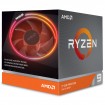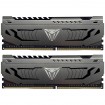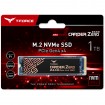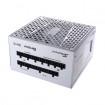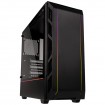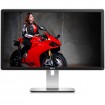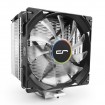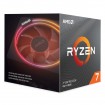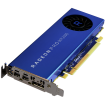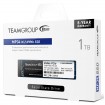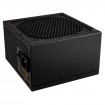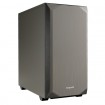Disclosure: building pcs since 286's, last pc built in 2012/13, a bit behind times.
I had a discussion with my boss today about renewing graphics workstations at our advertisement/signmaking company.
At the moment the plan is to get rid of all old barely functioning hardware (celerons/i3's), that run operations in way too fragmented manner - too many old computers doing separate things in the shop. Too much usb key hopping, different software versions and general inconvenience of having too many chairs to sit in during the day (technically needlessly)...
I need to figure out the platform for next build that will do most of the things we need (will describe later).
My main concern is intel/amd choice, core counts and how each performs in 2d vector graphics production role.
Do i go for (historically) stable intel performance with less cores or go for AMD's fabled new (3700/3800?) chips ? (To be clear: although intel rep dipped in recent times, i'm not here for the intel/amd drama - need performance advice.)...
Do i need a dedicated GPU for that sort of work ? Would it help ? How much would it help ? Definitely no need for rtx2080ti's in this case (pity, though ) but is there a point in slapping in old gtx970/980 over integrated ? I do use 970 at home with coreldrawx6, it works fine, i just dont know how much of a difference it makes over intel integrated (and i'm not pulling my machine apart to find out
) but is there a point in slapping in old gtx970/980 over integrated ? I do use 970 at home with coreldrawx6, it works fine, i just dont know how much of a difference it makes over intel integrated (and i'm not pulling my machine apart to find out  )
)
Software and hardware we use in the shop for the most part are CorelDraw x8/x9, Roland RIP for superwide solvent printer/cutter, couple of Graphtec plotters, NanoCAD/Artcam for large cabinetmakers cnc router (tekcel v-series 3x2m beastie).
Also, there is the need for centralised storage solution, like NAS of some sort, with which i dont have any experience at all. Want to get something that will let me do redundant storage to 2 sets of drives (i'm not familiar with raid types).
Screens: 24in is absolutely fine, not sure of the need of 144hz. Panel color quality/price is more important.
For memory, i think we do need 32gb as sometimes we get monster bitmaps to print on the monster printer we have. Curent machine handling printing has 16gb and handles well, but looking to the future may need moar.
For local storage 1tb nvme's should suffice, as most storage would be handled by NAS.
Budget is not unlimited, but not set yet. However we both agreed that performance takes priority over RGB nonsense. Basic cases(no glass/windows), adequate for cpu/gpu but reliable power supplies (no need for watt overkill here), air cooling (stability is key, no OC), no game'y gimmicks (pc moonlighting as a christmas tree) etc... Keep it as low cost as possible. To quote boss "we're not a corporation".
I'm off to raid some cpu benching sites now, and although its more of a general query if someone have something more specific to feed me then i'd appreciate it...
In general we need a machine capable of shoving LOADS of flat vectors and monster printing processing for as little money as possible.
Any advice is welcome and appreciated, educate me...
I had a discussion with my boss today about renewing graphics workstations at our advertisement/signmaking company.
At the moment the plan is to get rid of all old barely functioning hardware (celerons/i3's), that run operations in way too fragmented manner - too many old computers doing separate things in the shop. Too much usb key hopping, different software versions and general inconvenience of having too many chairs to sit in during the day (technically needlessly)...
I need to figure out the platform for next build that will do most of the things we need (will describe later).
My main concern is intel/amd choice, core counts and how each performs in 2d vector graphics production role.
Do i go for (historically) stable intel performance with less cores or go for AMD's fabled new (3700/3800?) chips ? (To be clear: although intel rep dipped in recent times, i'm not here for the intel/amd drama - need performance advice.)...
Do i need a dedicated GPU for that sort of work ? Would it help ? How much would it help ? Definitely no need for rtx2080ti's in this case (pity, though
 ) but is there a point in slapping in old gtx970/980 over integrated ? I do use 970 at home with coreldrawx6, it works fine, i just dont know how much of a difference it makes over intel integrated (and i'm not pulling my machine apart to find out
) but is there a point in slapping in old gtx970/980 over integrated ? I do use 970 at home with coreldrawx6, it works fine, i just dont know how much of a difference it makes over intel integrated (and i'm not pulling my machine apart to find out  )
)Software and hardware we use in the shop for the most part are CorelDraw x8/x9, Roland RIP for superwide solvent printer/cutter, couple of Graphtec plotters, NanoCAD/Artcam for large cabinetmakers cnc router (tekcel v-series 3x2m beastie).
Also, there is the need for centralised storage solution, like NAS of some sort, with which i dont have any experience at all. Want to get something that will let me do redundant storage to 2 sets of drives (i'm not familiar with raid types).
Screens: 24in is absolutely fine, not sure of the need of 144hz. Panel color quality/price is more important.
For memory, i think we do need 32gb as sometimes we get monster bitmaps to print on the monster printer we have. Curent machine handling printing has 16gb and handles well, but looking to the future may need moar.
For local storage 1tb nvme's should suffice, as most storage would be handled by NAS.
Budget is not unlimited, but not set yet. However we both agreed that performance takes priority over RGB nonsense. Basic cases(no glass/windows), adequate for cpu/gpu but reliable power supplies (no need for watt overkill here), air cooling (stability is key, no OC), no game'y gimmicks (pc moonlighting as a christmas tree) etc... Keep it as low cost as possible. To quote boss "we're not a corporation".
I'm off to raid some cpu benching sites now, and although its more of a general query if someone have something more specific to feed me then i'd appreciate it...
In general we need a machine capable of shoving LOADS of flat vectors and monster printing processing for as little money as possible.
Any advice is welcome and appreciated, educate me...


 w-end PCs from Dell, HP etc, are going to be as cheap or cheaper than PCs you can build yourself. For example look at the Dell Optiplex 70 and Vostro series PCs. They find it hard to compete once you get to customised PCs: once you want to add non-standard amounts of RAM or a GPU, then you may find it cheaper to BYO.
w-end PCs from Dell, HP etc, are going to be as cheap or cheaper than PCs you can build yourself. For example look at the Dell Optiplex 70 and Vostro series PCs. They find it hard to compete once you get to customised PCs: once you want to add non-standard amounts of RAM or a GPU, then you may find it cheaper to BYO.